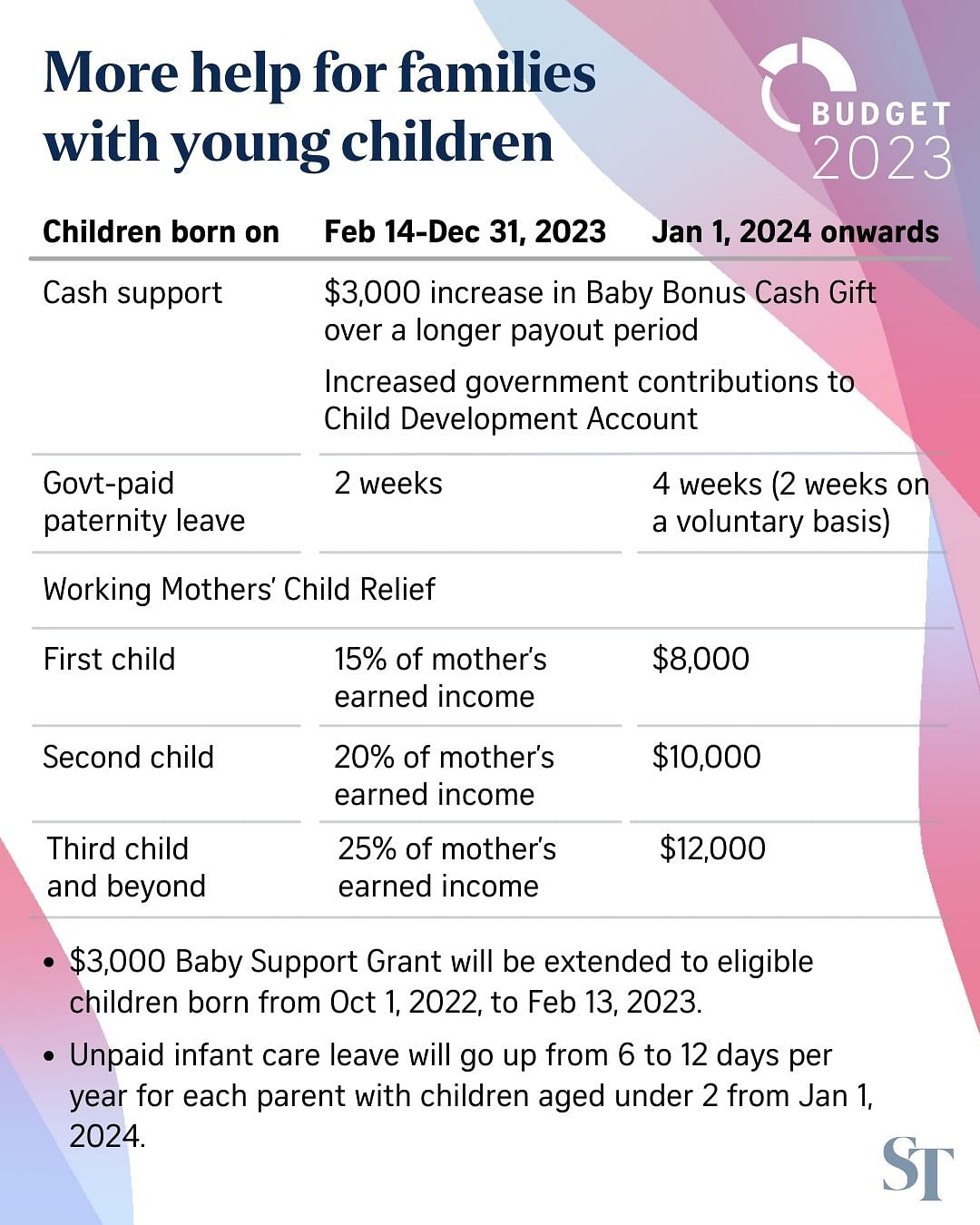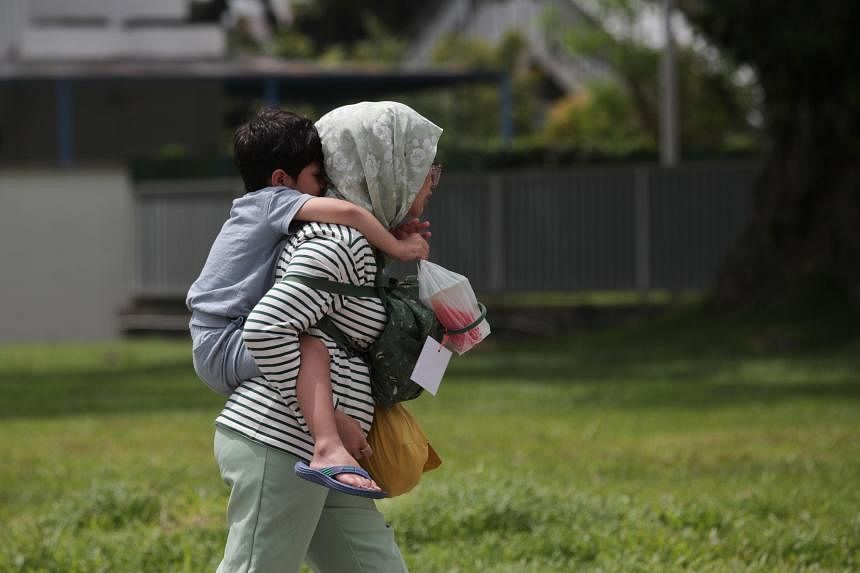SINGAPORE - Even as Singapore’s total fertility rate (TFR) hit a historic low of 1.05 in 2022, with more people postponing marriage and parenthood or having fewer children, the Government will support those with marriage and parenthood aspirations to realise them, Minister in the Prime Minister’s Office (PMO) Indranee Rajah said on Friday.
“This was partly due to the Tiger year in the lunar calendar, which is generally associated with lower births among the Chinese,” she said in Parliament during the debate on ministries’ budgets, as she explained the decline in TFR.
Responding to MPs who had raised questions about population trends, Ms Indranee said Singapore’s TFR has been declining for many years, like other advanced societies.
“Even Norway and Finland, who were previously successful in improving their fertility rates, are finding it difficult to sustain these gains,” she said.
At the same time, Singapore faces a host of complexities on the population front, including an ageing population and a more diverse society, said Ms Indranee, who oversees the National Population and Talent Division (NPTD), which is under the Strategy Group in the PMO.
With this backdrop in mind, Singapore’s population strategies will seek to achieve a stronger social compact in a number of ways, she said.
Supporting aspirations and strengthening assurance
The Government will provide more support for the early stages of family formation in a few areas, she said, as announced earlier during Deputy Prime Minister Lawrence Wong’s Budget speech.
This includes greater priority for first-timer families with children, as well as younger married couples, in their Build-To-Order flat applications, including an additional ballot.
Other measures are the increase in the Baby Bonus cash gift and the Child Development Account First Step Grant for all eligible Singaporean children, and a higher co-matching cap in the Child Development Account for the first and second child.
Government-paid paternity leave will also be extended to four weeks, up from the current two, for eligible working fathers of children born on or after Jan 1, 2024.
“This is a big step towards normalising and enabling fathers to play a bigger role in raising our children,” said Ms Indranee, urging employers and colleagues to help fathers feel assured about using their leave.
Replying to Mr Louis Ng’s (Nee Soon GRC) question on whether childcare leave could be increased and leave be given to couples seeking fertility treatments, she said another important strategy is to increase the adoption of flexible work arrangements (FWAs), which helps caregivers of not only children but also the elderly.
The Tripartite Guidelines on FWAs will be rolled out in 2024, requiring employers to fairly and properly consider FWA requests, she said.
Responding to Mr Ng, who had asked if these guidelines could be rolled out earlier or legislated, she said: “Even as we encourage more FWAs, we need to make sure workplace harmony is maintained. The best way to achieve this win-win outcome is not by taking a legalistic approach at the onset, but to focus on shaping norms and fostering workplace trust.”
The Government will also review how it can better support new parents in caring for their infants, said Ms Indranee.

Growing opportunities
She said that with slowing growth in the resident workforce and a maturing economy, Singapore will have to work harder to restructure the economy to sustain economic growth.
She said the Government is looking into ways to further develop the local workforce, by preparing students for jobs of the future and diversifying pathways, investing heavily in upskilling and building a stronger pipeline of Singaporeans for leadership positions across different sectors.
Singapore also needs to remain open to foreign manpower to help fill skills shortages in the labour market and boost the economy’s productive capacity, she added.
Strengthening solidarity for a more cohesive society
Immigration continues to play an important role in moderating the impact of ageing and low birth rates in Singapore’s population, said Ms Indranee.
In 2022, Singapore granted about 23,100 new citizenships, including about 1,300 to children born overseas to Singaporean parents. About 34,500 people were given permanent resident status in 2022.
Giving these updates to Ms Cheng Li Hui (Tampines GRC), Ms Indranee noted that these figures are slightly higher than pre-Covid-19 levels, as some applications had to be rolled over into 2022.
A comprehensive set of factors, including an individual’s family ties to Singaporeans, economic contributions and qualifications, is evaluated when granting PR or citizenship, she said, to ensure that new immigrants are rooted and contribute meaningfully here.
She added that all new adult citizens come from within the pool of PRs and have been in Singapore for some time, while second-generation PRs serve national service.
Planning ahead for future generations
Singapore does not use a single population planning parameter, said Ms Indranee.
“Instead, increasingly we develop various scenarios to stress-test our assumptions and allow for a range of possible outcomes,” she said in response to Ms Ng Ling Ling (Ang Mo Kio GRC) who wanted to know if the Government has long-term population projections and how Singaporeans can be involved in this process.
The Government provided an update in 2018 that Singapore’s total population is likely to be significantly below 6.9 million by 2030. Based on various scenarios, this remains the case, said Ms Indranee, adding that this planning parameter of 6.9 million remains relevant for the 2030s.
“Planning for the future is a complex process. We will have to consider what our future population will look like, not just in terms of size but also composition and make-up,” she said.
“Looking beyond 2030, it is critical that we continue to plan ahead of time, to maintain the flexibility to adjust our plans, respond to new trends and safeguard options for the future. This will help us to maintain a good quality living environment and home for all Singaporeans.”


